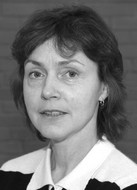Fencer's postural control as key component of sport technique for success of combat actions
Фотографии:
ˑ:
Dr.Hab., Associate Professor L.G. Ryzhkova1
Dr.Hab., Professor G.N. Germanov2
PhD S.V. Sedochenko3
1Russian State University of Physical Education, Sport, Youth and Tourism (GTSOLIFK), Moscow
2Pedagogical Institute of Physical Culture and Sport of Moscow City Pedagogical University, Moscow
3Voronezh state Institute of physical culture, Voronezh
The study analyses the effects of asymmetrical workloads in the fencer’s prime posture versus the footwork including the shin muscles performance in the attacking and manoeuvring phases. Based on the study data, we designed and tested a set of corrective exercises with the real-time biological feedback system to trace the asymmetrical workloads in fencing bouts. We found that the real-time biological feedback system applied in the 13-14 year-old fencers’ physical training process facilitates the postural control skills building process, forms the right prime posture and improves the static/ dynamic body balancing skills in the training and competitive bouts. Special physical training practices for the 13-14 year-old fencers with application of the real-time biological feedback system were found beneficial as verified by the improved training and competitive performance rates and notable progress in the scopes and success rates of the technical and tactical actions.
Keywords: prime posture, asymmetrical workloads, electroneuromyographic rates, junior fencers.
References
- Geodakyan V.A. Evolyutsionnye teorii asimmetrizatsii organizmov, mozga i tela [Evolutionary theories of asymmetrization of organisms, brain and body]. Uspekhi fiziologicheskikh nauk, 2005, vol. 36, no. 1, pp. 24–53.
- Zelenin L.A. Sopryazhennoe formirovanie sposobnosti k ravnovesiyu posredstvom trenazhernogo kompleksa pri obuchenii yunykh sportsmenov-kanoistov. Avtoref. dis. dokt. ped. nauk [Combined formation of balance ability using training complex in training of young canoeists. Doct. diss. Abstract (Hab.)]. Naberezhnye Chelny, 2014, 46 p.
- Ilyukhin A.A., Bleer A.N. Ispolzovanie trenazhera s biologicheskoy obratnoy svyazyu dlya testirovaniya i obucheniya studentov [Using simulator with biofeedback for testing and teaching students]. Teoriya i praktika prikladnykh i ekstremalnykh vidov sporta, 2012, no. 2 (24), pp. 6–9.
- Movshovich A.D. Fekhtovanie: nachinayuschemu treneru [Fencing: for beginner coach].Moscow: Akademicheskiy Proekt publ., 2011, 112 p.
- Tyshler G.D. Teoriya i metodika formirovaniya tekhniki i taktiki peredvizheniy sportsmenov v sorevnovatelnom prostranstve i tekhnologiya sovershenstvovaniya priemov v mnogoletney trenirovke. Avtoref. dis. dokt. ped. nauk [Theory and methodology of formation of movement technique and tactics in athletes in competitive environment and hold excelling technology within long-term training. Doct. Diss. (Hab.)]. Moscow, 2010, 27 p.
- Tyshler D.A., Ryzhkova L.G. Fekhtovanie. Tekhniko-takticheskaya i funktsionalnaya trenirovka [Fencing. Technical and tactical and functional training]. Moscow: Akademicheskiy Proekt publ., 2010, 183 p.




 Журнал "THEORY AND PRACTICE
Журнал "THEORY AND PRACTICE